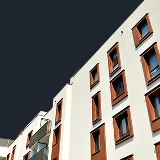Decoration and interior design are two concepts that are often used interchangeably, but they hold significant differences in their approach, purpose, and scope. While both aim to enhance the spaces we live and work in, their approach and methodology can vary considerably.
What is Decoration?
Decoration focuses on beautifying a space through the selection and arrangement of aesthetic elements such as furniture, textiles, colors, and decorative accessories. Decoration does not involve modifying the physical structure of the space; rather, it is about adorning and adding visual layers that reflect the desired personal or thematic style.
Imagine a living room that feels somewhat outdated and disorganized. A decorator could intervene by selecting a new color palette for the walls, incorporating modern curtains, choosing sofas and cushions that complement the new color scheme, and adding artworks and plants to enliven the space. The structure of the living room remains intact, but its appearance is completely transformed.
What is Interior Design?
Interior design, on the other hand, involves a deeper and more technical approach that includes space planning, ergonomics, functionality, as well as aesthetic aspects. Interior designers work from the concept phase to execution, considering how spaces are used and how people interact with them. This may involve modifying the layout of spaces, adding or removing walls, improving natural and artificial lighting, and selecting materials that are both functional and welcoming.
Imagine a small and enclosed kitchen that is uncomfortable for cooking and socializing. An interior designer could redesign the space by removing a wall to create an open kitchen that flows into the dining area, thus enhancing social interaction and better utilizing natural light. Smart storage solutions, more efficient work surfaces, and durable materials could be incorporated, along with decorative elements that aesthetically tie the kitchen to the rest of the house.
While decoration focuses on the superficial beauty and final details of a space, interior design encompasses a broader understanding of design, functionality, and aesthetics. Both disciplines are essential for creating spaces that are not only visually appealing but also comfortable, practical, and tailored to the needs of those who inhabit them. The choice between one or the other will depend on the scale of the project and the specific goals desired to achieve.
















